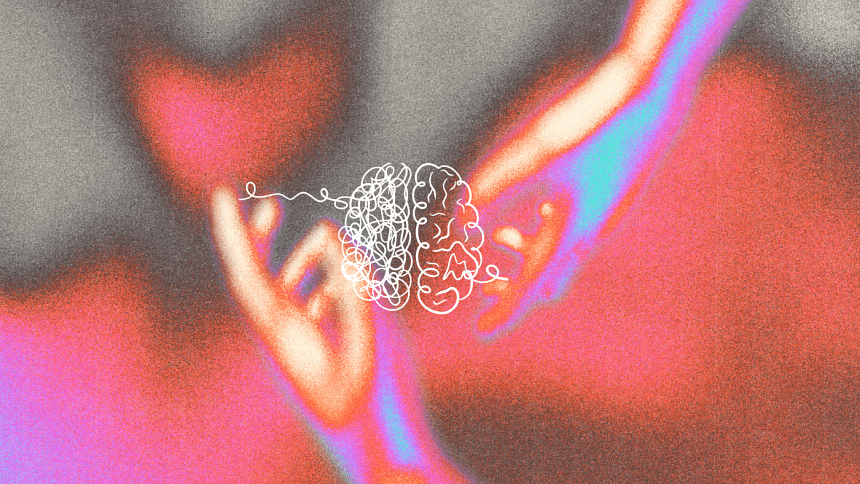The significance of BPD Awareness Month

May arrives gently. The air warms, the trees bloom, and the world softens into something that feels like healing. But for many living with Borderline Personality Disorder (BPD), May's calm stands in sharp contrast to the emotional chaos within. Each year, May arrives with little care for a cause that deserves far more attention – BPD. May is BPD Awareness Month.
In Bangladesh and across South Asia, where mental illness remains cloaked in shame, stigma, and silence, this observance goes largely unnoticed. But for countless young people grappling with the struggles of BPD, the silence can be deafening, and the consequences, deadly.
BPD is a complex and often misunderstood mental health condition, characterised by chronic emotional instability, intense and stormy relationships, a fragile sense of self, impulsivity, and a pervasive fear of abandonment. It affects approximately 1.4 percent of the global population, though the true figure may be higher due to frequent misdiagnoses and cultural underreporting. Notably, BPD disproportionately affects young women – around 75 percent of those diagnosed are women, with symptoms typically appearing in late adolescence or early adulthood, precisely the period when societal pressures are tightening around young women, especially in a conservative society like ours.
In Bangladesh, a young woman showing signs and symptoms of BPD is unlikely to be met with understanding, kindness, or support. Instead, she may be dismissed as "moody," "too sensitive," or "emotionally unstable" – labels that stick fast in a culture that often equates femininity with restraint and mental illness with weakness.
This double stigma of mental illness and gender means that young women with BPD suffer not only the symptoms of their condition but also the crushing weight of social judgment. Their pain is trivialised, their trauma doubted, and their needs dismissed. Their self-harm may be misinterpreted as attention-seeking; their need for connection viewed as clinginess, desperation, or manipulation.
The emotional wounds of BPD are deep enough, but societal misunderstanding drives them even deeper. In a society where a woman's value is often still measured by her obedience, ability to get and sustain a marriage, and docility, BPD becomes more than a diagnosis, it becomes a source of shame. Families fear social fallout. Friends fade. Employers hesitate. And most tragically, the woman herself internalises the idea that she is broken beyond repair. These fears and stigma force many women into silence, robbing them of early diagnosis and treatment that could potentially alter their lives.
These misunderstandings aren't just painful, they're dangerous. According to the National Education Alliance for Borderline Personality Disorder, UK, up to 10 percent of individuals diagnosed with BPD take their own lives, one of the highest rates among psychiatric conditions.
When combined with the alarming rise in self-harm rates among young people in low and middle income countries like Bangladesh, the situation becomes critical. Yet, our conversations about mental health barely scratch the surface, let alone acknowledge conditions as complex as BPD. However, the cost of this silence is high.
Even in clinical settings, BPD is often treated with hesitation or avoidance. The disorder has historically been labelled "difficult to treat," and some professionals continue to shy away from working with those affected. This bias can leave individuals with BPD feeling hopeless, reinforcing the belief that they are "too broken" to deserve help.
But BPD is treatable. Over the last few decades, evidence-based therapies have changed the landscape of care. Dialectical Behaviour Therapy (DBT) – developed by Dr Marsha Linehan, (a survivor of BPD herself) – has been shown to significantly reduce self-harming behaviours, improve emotional regulation, and foster more stable relationships. Other treatments such as Mentalisation-Based Therapy (MBT) and Schema Therapy are also providing new hope to those previously deemed "untreatable."
However, access to these therapies in Bangladesh remains scarce. Mental health services are concentrated in urban areas, often prohibitively expensive, and culturally misaligned with the lived experiences of many patients. Personality disorders are still largely omitted from public health campaigns and school-based mental health programmes. Even within professional circles, awareness of BPD is limited.
This is why BPD Awareness Month matters, not just as a symbolic gesture, but as a rallying cry. It's an opportunity to dismantle myths, challenge stigma, and begin reimagining how we understand emotional suffering by fostering dialogue. It's a time to centre the voices of people, especially young women who live with this disorder and are fighting for dignity in systems not built for them. It's a call to action for policymakers, educators, health professionals, and communities to recognise that ignoring BPD won't make it go away. But awareness, compassion, and investment just might make it easier on those living with this diagnosis.
To move forward, we must begin by changing the narrative. We must begin with education, both public and professional. Schools, universities, and workplaces, should incorporate mental health literacy into their programmes, ensuring that young people learn about emotional well-being long before a crisis point. Medical institutions must prioritise training in personality disorders, so future clinicians are equipped not just with skills for diagnosis, but with empathy and tools for care.
At a societal level, we need to reimagine support systems. Families must be given tools to understand BPD, not through the lens of shame, but with compassion and context. Community-based resources, including peer-led support groups and culturally sensitive therapy models, can help reduce the burden on clinical systems while offering people a space to feel understood.
Finally, we must be willing to sit with the discomfort of emotional pain; not to fix it immediately, but to treat it with care. Because behind every person with BPD is not a problem to be solved, but a person longing for connection, safety, and dignity. Behind every "difficult" person is often an inner child longing to be understood.

 For all latest news, follow The Daily Star's Google News channel.
For all latest news, follow The Daily Star's Google News channel. 








Comments